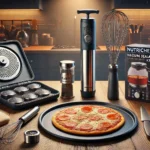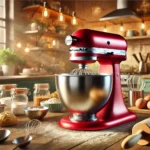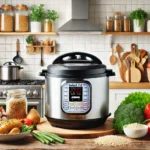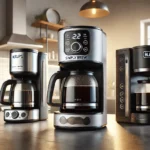Every morning, you grab your favorite juice. But have you thought about the bottle it’s in? Glass or plastic—each choice affects your health and the planet.
When you pick up that cold-pressed OJ or green smoothie, do you worry about chemicals or landfills?
What if your breakfast choice could protect your family and clean oceans? It’s not just about fridge space. It’s about choosing between safety and sustainability.
Which is more important: a light bottle today or a healthier future tomorrow?
Introduction: The Juice Bottle Dilemma
Choosing between glass and plastic juice bottles is more than a simple choice. It affects your health, the planet, and your daily life. Let’s explore what’s at stake.
What’s at Stake: Health, Environment, and Convenience
Your choice impacts three key areas:
- Health: Chemicals in plastic or breakage risks with glass
- Environment: Pollution from plastic waste vs. energy use for glass production
- Convenience: Portability, storage space, and cleanup
Why Your Juice Container Choice Matters
Every sip you take matters. Plastic bottles might leach microplastics, while glass avoids this but can break. For instance, Norcalway offers BPA-free plastic, but recycling is a big issue. Glass keeps nutrients better but uses more energy to make.
Your choice affects your family’s safety and the planet’s health.
The Growing Debate Among Health-Conscious Consumers
Today, 68% of shoppers look for eco-friendly packaging (2023 Consumer Reports). org). study). Many choose glass, but plastic is still popular for being easy to carry. The question is: can we have both convenience and sustainability?
Which choice fits your values? The answer starts here.
Glass vs. Plastic Juice Bottles: A Comprehensive Comparison
Choosing between glass and plastic means knowing their differences. Let’s look at how they’re made and what it means for your juice.
Material Composition and Manufacturing Processes
- Glass: Made from silica sand, limestone, and recycled materials. It’s made by melting at high temperatures without adding chemicals.
- Plastic: Often made from polyethylene terephthalate (PET) or polycarbonate. It might include bisphenol-A (BPA) or phthalates, which are debated in are plastic juice bottles safe? discussions.
Shelf Life and Juice Preservation Qualities
Glass blocks UV light, keeping nutrients and flavor fresh. Plastic bottles let light in, which can break down vitamins over time. Plastic also lets oxygen through, which can affect taste and safety.
Taste Implications: Does the Container Affect Flavor?
“Glass maintains true taste profiles by preventing chemical interactions,” says a 2022 study in Packaging Technology and Science. Plastic containers may leach odors or change flavor due to heat or acidity.
Many people say cheaper plastic bottles have a “plastic aftertaste.” Glass keeps the taste pure, which is why premium brands like Epica or Luxfuel use it.
Both materials have their downsides. But these points help us understand their safety and usefulness.
Health and Safety Considerations
Choosing between glass and plastic is all about your health. Plastic bottles labeled as bp-free juice bottles don’t have BPA. But, they might still have BPS or phthalates. These can affect hormones over time.
- BPA, found in some plastics, can seep into acidic juices like orange or grapefruit.
- Look for recycling codes 2,4,5 on plastic bottles—these are less likely to leach chemicals.
- Glass doesn’t leach chemicals but can shatter, posing injury risks if dropped.
“Glass remains the safest material for long-term chemical stability,” says the FDA, which now restricts BPA in baby bottles but not all juice containers.
Recent studies show that are plastic juice bottles safe? depends on how you use them. Reheating or storing hot liquids in plastic can transfer chemicals. Glass keeps flavors pure without additives. Always check labels: brands like Lifefactory offer tempered glass with silicone grips to reduce breakage.
While BPA-free options reduce risks, no single choice fits all. Prioritize containers with safety certifications like FDA approval or “BPA-free” labels. For kids’ drinks, glass might be safer but needs careful handling.
Environmental Impact and Sustainability
Choosing between glass and plastic means looking at the environmental effects at each step. This includes production and disposal. Let’s see how each material does in terms of long-term sustainability:
Carbon Footprint: Manufacturing and Transportation
- Glass making needs a lot of heat (1,400°C) and uses a lot of energy. But, it uses a lot of natural sand.
- Plastic making uses oil, which is bad for the planet. It’s lighter, so it costs less to ship. But, it has to travel far because it’s made all over the world.
Recycling Realities: The Gap Between Theory and Practice
Both materials can be recycled, but how well they are recycled is different:
- Glass can be recycled forever. But, it needs special places and clean waste.
- Plastic recycling is only about 9% worldwide. This is because of dirt and sorting costs.
Biodegradability and Ocean Impact
Neither material goes away on its own:
- Glass breaks into sharp pieces but doesn’t harm the environment with toxins.
- Plastic breaks down into tiny pieces that harm the ocean and the food we eat.
Eco-Friendly Juice Bottles: Innovations to Watch
Companies are coming up with new ideas for bottles. Some of these include:
- Bioplastics made from cornstarch (like NatureFlex by NatureWorks).
- Reusable glass systems from SodaStream.
- Technology that turns ocean plastic into new bottles (like Ioniq Materials’ chemical recycling).
Look for eco-friendly juice bottles with recycling codes or third-party certifications like Cradle to Cradle.
Practical Factors: Cost, Convenience, and Durability
Choosing the best juice bottle for storage depends on your lifestyle and budget. Let’s break down how cost and practicality shape the decision.
Price Comparison: Initial Investment vs. Long-Term Value
Glass bottles cost more upfront but last longer. For example, the Epica 18-Oz Glass Bottles start at $15 for a set of four. Plastic options like Norcalway 6pcs 12oz Plastic Bottles cost half that price, but they may need replacing sooner.
Over time, glass often saves money by avoiding frequent replacements.
Best Juice Bottle for Storage and Transportation
- Refrigeration: Glass retains flavor and doesn’t absorb odors, making it ideal for overnight storage.
- Travel: Plastic’s lightweight design resists breakage during commutes or hikes. The Norcalway line includes leak-proof caps for on-the-go use.
- Freezing: Glass can crack in the freezer—opt for plastic or invest in tempered glass like the Epica Pro series.
Popular Options on Amazon: Real-World Examples
Amazon shoppers trust these picks:
- Epica 18-Oz Glass Bottles: Rated 4.8/5 stars, these include silicone sleeves to prevent shattering. Great for home storage.
- Norcalway Plastic Bottles: BPA-free and stackable, averaging 4.5/5 stars. Perfect for office lunches or kids’ snacks.
“Love the Epica bottles! They keep my green juice fresh for days without any weird taste.” — Amazon reviewer
Popular Juice Bottle Options on Amazon
Choosing the right juice bottle is important. Amazon has many glass and plastic bottles to choose from. They offer quality, price, and eco-friendliness.
Top-Rated Glass Juice Bottles
-
Sursip 18oz Glass Water Bottle Set of 6: Leak-proof caps and shatter-resistant tempered glass make these a top pick for daily use.
- Luxfuel Glass Bottles: Clear glass water bottle is made from for durable thick glass which is BPA, PVC, BPS, Cadmium and Lead free.
- Epica Glass Bottles: Stainless steel caps and minimalist styling appeal to those seeking premium eco-friendly juice bottles.
Best-Selling Plastic Juice Containers
-
Norcalway Bottles: BPA-free and dishwasher-safe, these lightweight options are favored for their durability.
- Superlele Bottles: Made of thick food grade PET, with high permeability and air tightness, these juice bottles are safe and tasteless, drop resistant.
- Leaflai Bottles: These juice bottles are thick food grade PET, safe and tasteless, drop resistant and durable.
Compare needs: If durability outweighs cost, glass wins. For budget-friendly transport, plastic is a top pick.
Check out this article for more healthy tips on storage container for your kitchen.
Making the Right Choice for Your Needs
Choosing between glass and plastic juice bottles depends on what matters most to you. Glass is great if you want to avoid chemicals. It keeps your drink’s taste pure without adding BPA or other harmful substances.
For example, Ball jars are strong and keep flavors and smells out. But, glass is heavy and can break easily. This might be a problem if you’re always on the move.
Plastic bottles, like those from Nalgene, are lighter and don’t break as easily. But, they might still leak chemicals over time. They can be recycled, but not all plastics are created equal.
Plastic #2 and #4 are better for the planet than #3 or #7. Glass might cost more upfront, but it lasts longer. This means you won’t need to buy new bottles as often.
If you care about the environment, glass is a better choice because it can be recycled forever. But, plastic is easier to carry around. It’s all about what you value more.
Do you want to stay healthy and have a long-lasting product, or do you prefer something light and easy to carry? Your choice affects your health and the planet. It’s a decision made with every sip.




